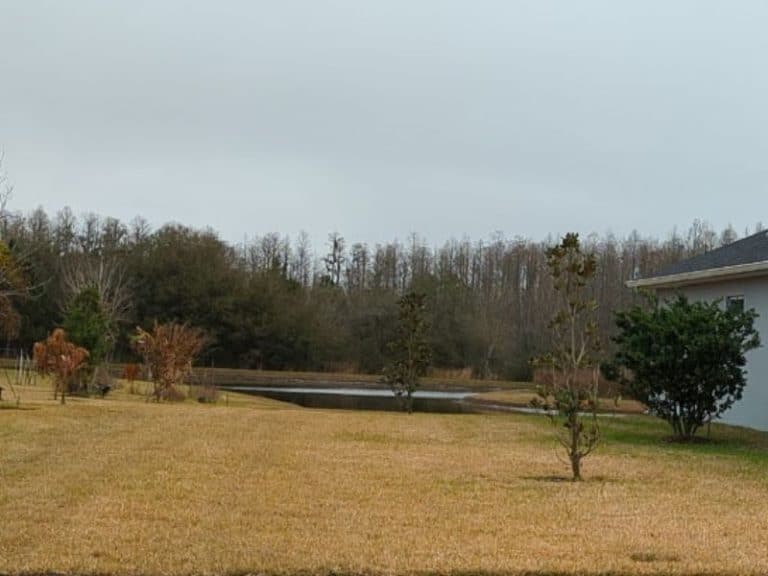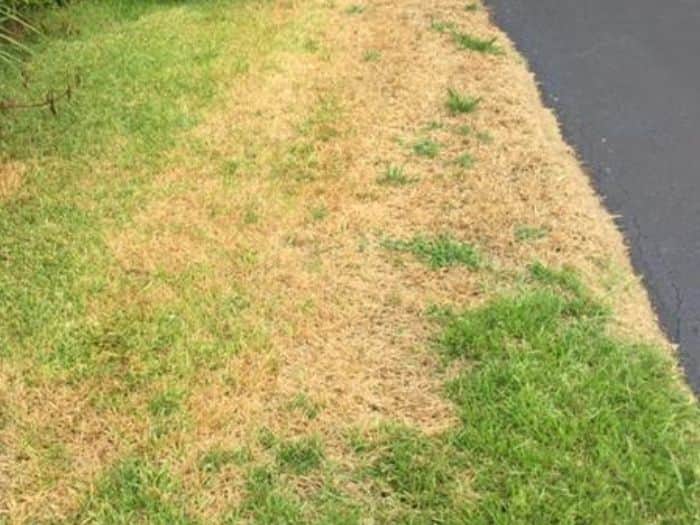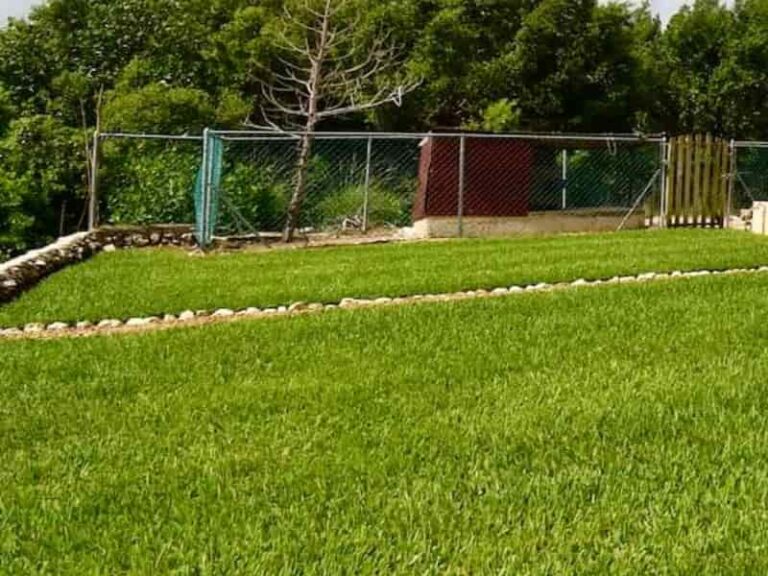St. Augustine Grass Diseases and Problems [Identification, Pictures + Fixes]
We’ve all been there before- you wake up one day and your otherwise lush green St. Augustine lawn is spotting unsightly patches of brown or yellow grass. This- despite the fact that you’ve been mowing, watering, and fertilizing the lawn as necessary. So- what could be the issue here?
Well, St. Augustine grass- despite being relatively disease-resistant, is still vulnerable to a variety of fungal diseases, as well as pest infestations and competition from weeds. All these factors can affect the health of your St. Augustine turf, leading t it showing visible signs of turf stress.
In this blog, we discuss St. Augustine grass problems in detail, including what causes them and how to fix these problems.
Signs St. Augustine grass has a problem
If your healthy St. Augustine turf is showing visible signs of stress, it could be as a result of a fungal disease, pest infestation, weed infestation, or any other applicable issues. You can identify your turf has a problem if you notice any of the following signs and symptoms:
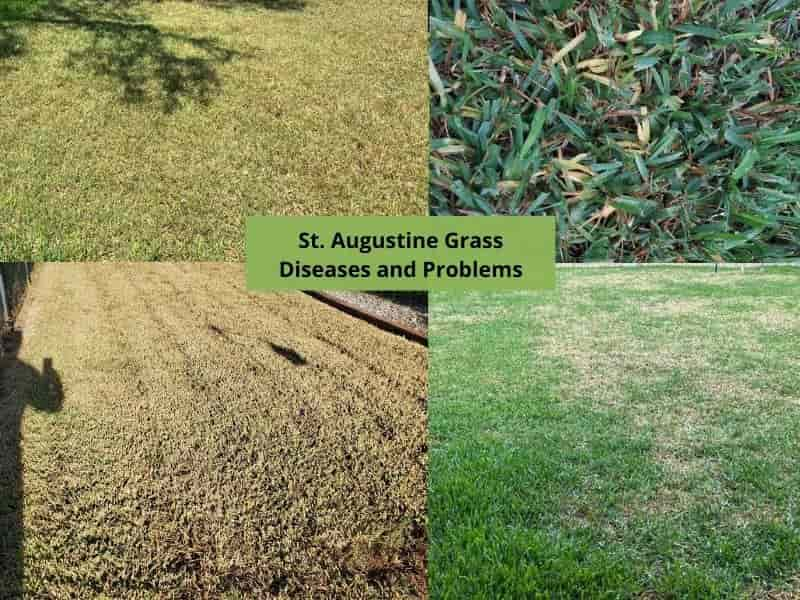
- Irregular brown spots- if you notice random patches of brown grass on your otherwise lush green St. Augustine lawn, you’re most likely dealing with a fungal infestation problem.
- Stolons turning brown- brown lateral runners/stolons are usually another pointer towards fungal infestations in St. Augustine turfs.
- Random yellowing of the grass blades- grass leaf yellowing can signify the presence of fungi, pests, weeds, or excessive shading.
- Browning at the base of the leaf blades- some types of fungi only cause browning at the base of the St. Augustine grass blades.
- Roots pulling out easily- if you can easily pull out some of the yellow/brown grass blades and the roots seem soft and spot a dark brown-black hue, you probably have a fungal issue.
Some of these signs and symptoms are usually the same, which is why you may want to consult a lawn professional if you’re unsure of what’s causing the problems on your lawn. For instance, it wouldn’t make sense to apply a fungicide when the problem is the presence of weeds or excessive shading.
Common St. Augustine grass diseases
St. Augustine grass is highly vulnerable to fungal diseases. The main types of fungi that tend to cause problems in St. Augustine lawns include take-all root rot fungi, brown patch fungi, gray leaf spot fungi, fairy ring fungi, and nigrospora stolon rot fungi.
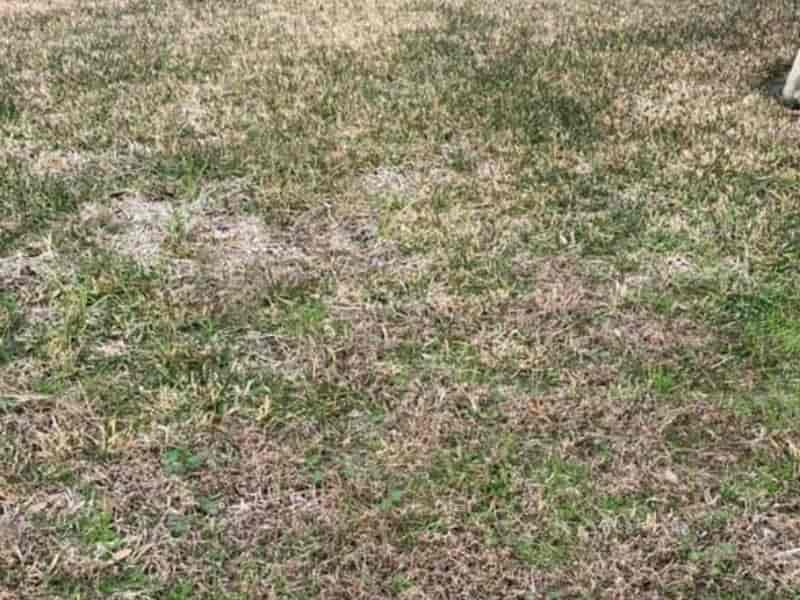
Each of these fungal diseases is discussed further below:
1. Take-all root rot (TARR)
Take-All root rot typically occurs during the peak growth months of April and May, resulting in grass blade yellowing as the turf refuses to green up. However, since the yellowing of grass blades can also be caused by excessive shading, you can confirm that take-all root rot fungal infestation is the problem by pulling out a few blades of St. Augustine grass from the soil and noting how hard they are to pull. If the blades pull out easily, then take-all root rot might be the problem, as the disease causes the grassroots to decay and become soft.
To treat your St. Augustine turf of take-all root rot, we recommend applying a one-inch layer of sphagnum peat moss to cover up the affected lawn areas. You’ll want to avoid using fungicides for this particular turf disease, as they are not usually effective and the problem won’t go away.
2. Brown Patch Disease
Unlike TARR which occurs during the peak growth season, brown patch fungi- also known as Rhizoctonia solani– are more likely to attack your St. Augustine lawn during fall and winter. This is because the extremely low nighttime temperatures during these seasons favor them. Excessive thatching and excessive soil moisture can also attract brown patch fungi.
As the name suggests, brown patch disease is usually characterized by dark brown patches occurring at the base of the leaf blades where stolons sprout from. You can also diagnose brown patch disease by pulling the affected blades from the attached runners to see if they pull loose easily. If so- then you have a brown patch problem.
To effectively treat brown patch disease and help your St. Augustine lawn to recover, it’s advisable to use a commercial fungicide with active ingredients like azoxystrobin, myclobutanil, and thiophanate methyl. Alternatively, you can take a proactive approach to prevent the disease before it occurs by ensuring proper soil aeration, good drainage, watering regularly, dethatching, and avoiding fertilizing during the cool seasons.
3. Nigrospora Stolon Rot
Nigrospora sphaerica is a fungus that inhibits the proper absorption of moisture and nutrients by the St. Augustine grassroots, thereby causing the grass blades to turn yellow. You can identify this problem by examining the lateral runners that sprout from the base of the grass blades. If they’re decaying and have a dark brown color, then you probably have Nigrospora stolon rot fungi in your lawn.
Nigrospora stolon rot fungi are usually attracted to high temperatures and dry conditions. Therefore, you can prevent the problem by keeping your St. Augustine lawn adequately watered during the summer months. Meanwhile, treatment entails the application of a good-quality commercial fungicide.
4. Gray Leaf Spot Disease
This St. Augustine fungal disease is characterized by dead patches of brown turf and typically occurs when conditions are hot and humid. Too much water and too much fertilizer in the soil can also provide appropriate conditions for the growth of the fungi that cause this turf disease. To treat gray leaf spot disease, you can use a fungicide containing at least two active ingredients such as azoxystrobin and thiophanate-methyl. However, fungicide treatments won’t be as effective as prevention by avoiding overwatering and over-fertilizing St. Augustine.
5. Fairy Ring Disease
Fairy rings occur as dark green circles of grass surrounded by an extra ring of dead grass and is caused by a species of soil fungi called basidiomycetes. These fungi tend to prefer sandy soils that have minimal moisture and soil nitrogen. Excessive thatching can also provide favorable conditions for basidiomycetes.
The mycelia of these fungi compete for the available soil nutrients with the turfgrass as they grow outwards. This, in turn, starves the desirable turfgrass- resulting in the rings of dead grass around the mycelia. Fairy rings are not only unsightly but also result in the formation of thick fungal mats that prevent the absorption of water into the ground.
You can treat fairy ring disease on your St. Augustine lawn by applying a fungicide, but this isn’t always the preferable approach, as fungicides contain chemicals that degrade the environment. A better treatment would be to remove the soil and turfgrass in the affected areas and re-sod as necessary. To do this, dig out affected sod areas by up to 12-inches deep, then refill the holes with fresh soil and re-sod as necessary.
Other St. Augustine lawn problems
As mentioned earlier, fungal diseases are not the only thing you’ll have to look out for if you have a St. Augustine lawn. While this turfgrass species is relatively pest-resistant, it’s highly vulnerable to a particular species of pests called chinch bugs. As these tiny bugs feed on your turfgrass, they let off a particular toxin that causes grass leaf blade chlorosis (yellowing).
Since chinch bugs are tiny and hard to spot with the naked eye, you can identify if they’re the cause of your lawn issues by using a pair of magnifying lenses to spot them. Chinch bugs are also attracted to high-temperature conditions; hence you’re most likely to spot them on your St. Augustine lawn during the summer months.
Note: You can easily control chinch bugs by applying a suitable insecticide/pesticide to the affected lawn areas.
The other non-fungal problem you’re most likely to encounter on your St. Augustine lawn is the presence of weeds. Despite being a weed-resistant warm-season turfgrass species, St. Augustine grass may still be vulnerable to weed invasions if you fail to properly water or fertilize the lawn. Doing so makes the weed plants and your turfgrass compete for and share the minimal moisture and nutrients available in the soil, causing the St. Augustine turf to starve.
You can easily identify common lawn weeds- such as dandelion, crabgrass, and dollar-weed- on your St. Augustine lawn- as they have bright flowers, and large leaves, and typically grow taller than the turfgrass.
Note: You can get rid of weeds on your lawn by manually pulling them out or applying a post-emergent herbicide to the affected lawn areas.

